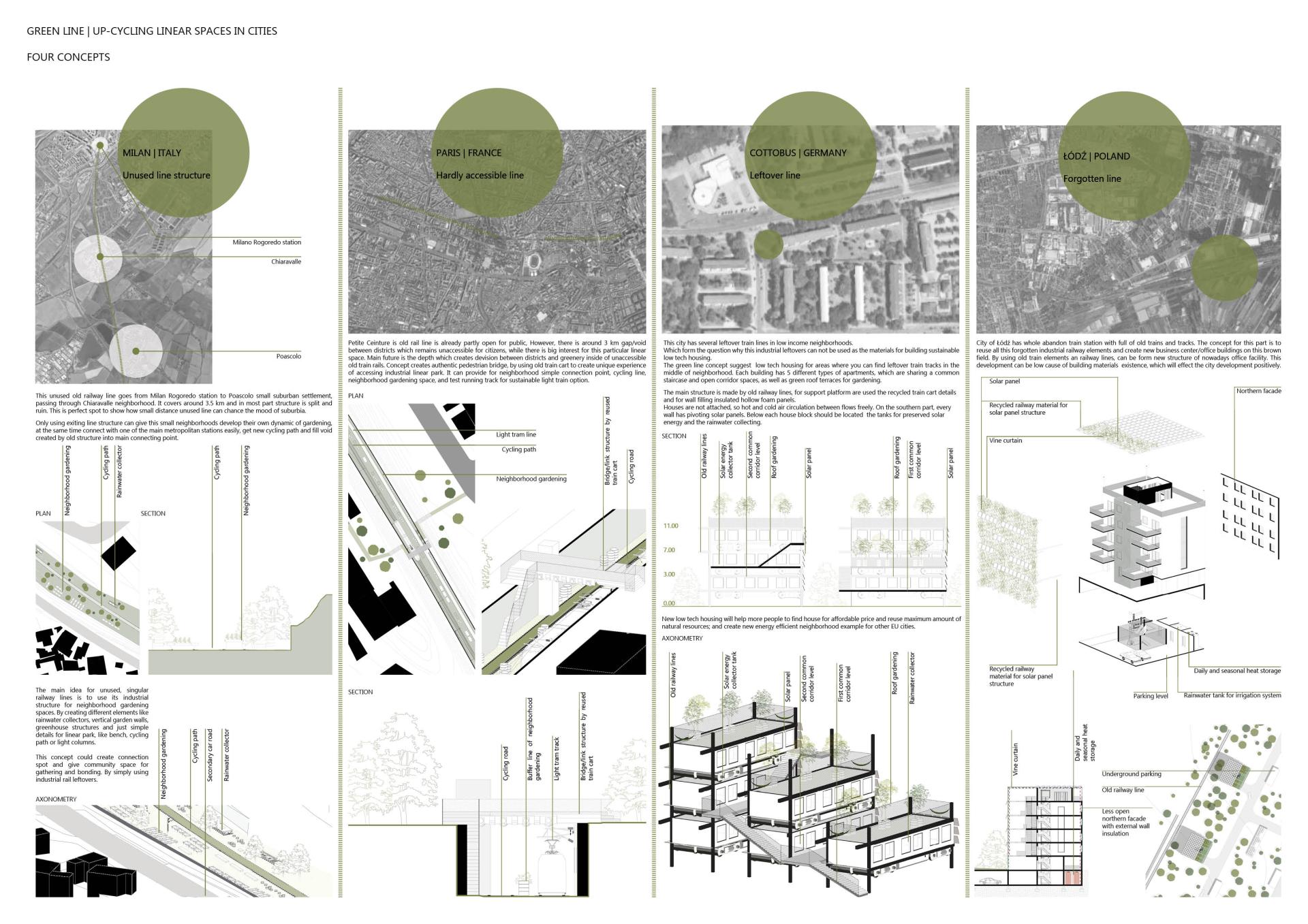Green Line
Basic information
Project Title
Green Line
Full project title
Green Line | Upcycling linear spaces in cities
Category
Prioritising the places and people that need it the most
Project Description
As cities are growing, changing, and creating new-century dynamics, they need smart green spaces for growing communities. The green line concept is based on finding unused narrow spaces and transforming them into a linear park connecting link. By identifying unused, inaccessible, leftover, or forgotten lines, finding upcycle solutions for design, and developing a tailor-made concept for each city. Green line is way of thinking for future sustainable EU cities.
Geographical Scope
Cross-border/international
Project Region
CROSS-BORDER/INTERNATIONAL: Italy, Germany
Urban or rural issues
Mainly urban
Physical or other transformations
It refers to other types of transformations (soft investment)
EU Programme or fund
No
Description of the project
Summary
The green line project is an approach for future green space development in the cities. By analyzing the importance of narrow spaces and giving them the value of the main character of the city. The concept is not based only on the ideology of reconnecting nature and creating more accessible green spaces. It's about reusing and upcycling materials and leftovers around the city. creating unique sustainable architecture and maximizing the usage of natural resources. Creating a different view and a way of thinking.
Key objectives for sustainability
The green line project is based on reuse, materials that can be found in selected project areas. The main goal is to reuse these industrial details, which nowadays are creating this structural gap in the cities. For example, in the case of Milan and Paris, both railway lines have enough materials to create and develop the complete project from their own lad plot without using any external materials. Which will provide the best example for future green line concept developments in another cities.
Key objectives for aesthetics and quality
The main goal is to find the lines in a city which usually divides some neighborhoods into two parts. this can be old railway tracks, unfinished roads, or unused quirky narrow spaces which can be found almost in every city. After identifying it, adjust the concept for that particular line and create a focal link that can connect not only districts but citizens, by providing neighborhood gardening, cycling, and new leisure spaces.
Key objectives for inclusion
As concepts are based on connecting citizens and creating a linear park for gatherings it will be accessible and affordable for every person. Idea is to create a nonprofit-oriented park where the neighborhood plays the main role. By carrying to Green Line they will improve their lifestyle, create unique surroundings and benefit from it. as well as the represented design of the two new buildings, shows exactly the same ideology.
How Citizens benefit
Citizen and neighborhood activity is the key for this concepts, its all about them and the way they will improve their lifestyle and daily routine in the city. They will not only benefit with cycling path and new connections from another districts but also neighborhood gardening and activities implemented in Green Line.
Physical or other transformations
It refers to other types of transformations (soft investment)
Innovative character
Parks and green areas were always a part of the city, as well as gardens and neighborhood gathering spaces. However, combining several functions and creating new architectural elements definitely makes Green Line stand out and shows how simple details can create a valued point.
Disciplines/knowledge reflected
The concept covers urban and architectural disciplines, by providing landscape design elements and upcycling material usage for new buildings.
How stakeholders are engaged
The green line project is a way of connection mostly based in cities. But the further goal is to create a complete web with these narrow green spaces and connect not only locally but also regionally. Obviously, it will benefit first the district and the selected city itself, but to be the honest transformation of unwanted spaces to the most demanding links will benefit and give a bigger impact on every European country.
Global challenges
On one hand, it's just a several km line between some spaces, but reality definitely challenges the global aspect. It shows how this narrow linear impact can affect and improve life for citizens all along it.
Learning transferred to other parties
The green line concept can be completely transferable and adjustable to new spaces. that is my main desire, to create and improve urban patterns by this simple linearity.
Keywords
Linear park
Urban community
Revitalized space
Neighborhood connection
Green space

